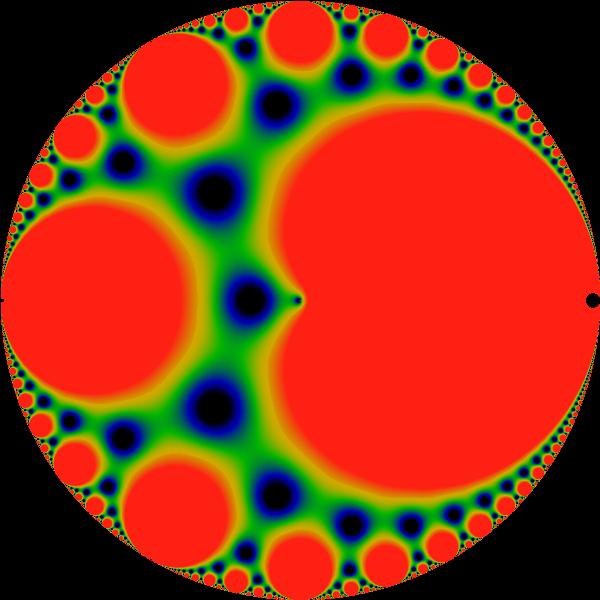
Poincaré metric
In mathematics, the Poincaré metric, named after Henri Poincaré, is the metric tensor describing a two-dimensional surface of constant negative curvature. It is the natural metric commonly used in a variety of calculations in hyperbolic geometry or Riemann surfaces.
There are three equivalent representations commonly used in two-dimensional hyperbolic geometry. One is the Poincaré half-plane model, defining a model of hyperbolic space on the upper half-plane. The Poincaré disk model defines a model for hyperbolic space on the unit disk. The disk and the upper half plane are related by a conformal map, and isometries are given by Möbius transformations. A third representation is on the punctured disk, where relations for q-analogues are sometimes expressed. These various forms are reviewed below.
Schwarz lemma[edit]
The Poincaré metric is distance-decreasing on harmonic functions. This is an extension of the Schwarz lemma, called the Schwarz–Ahlfors–Pick theorem.